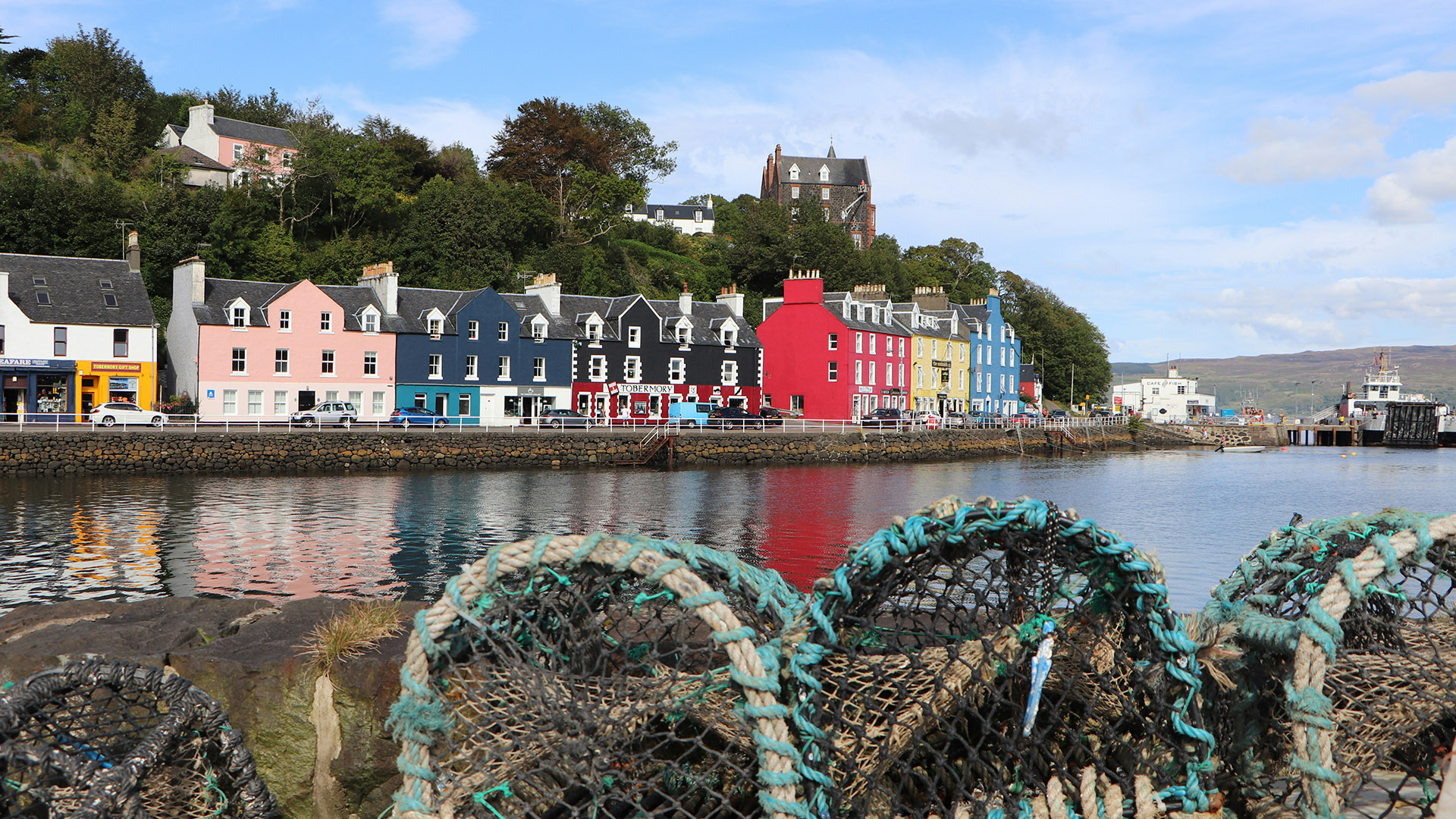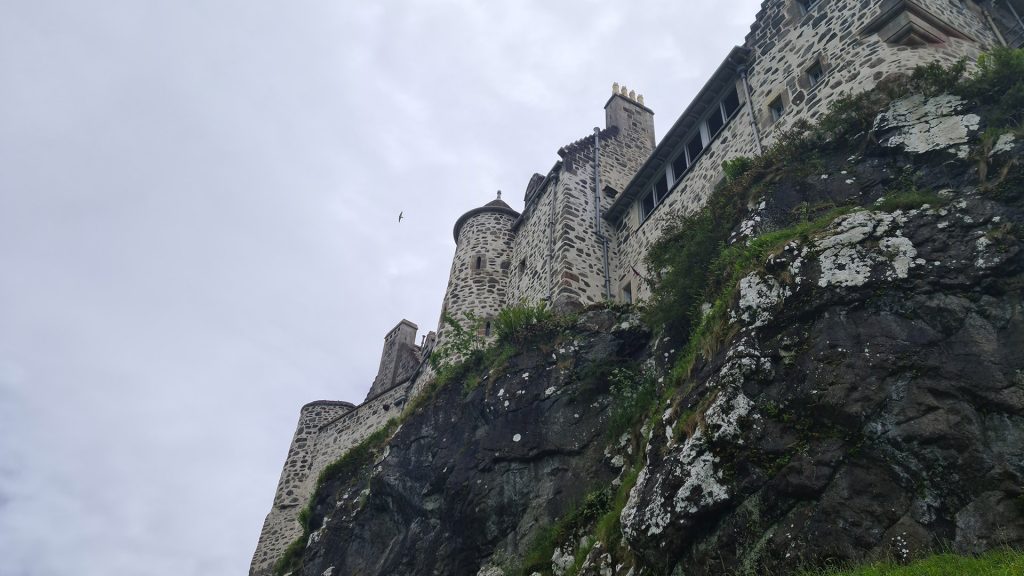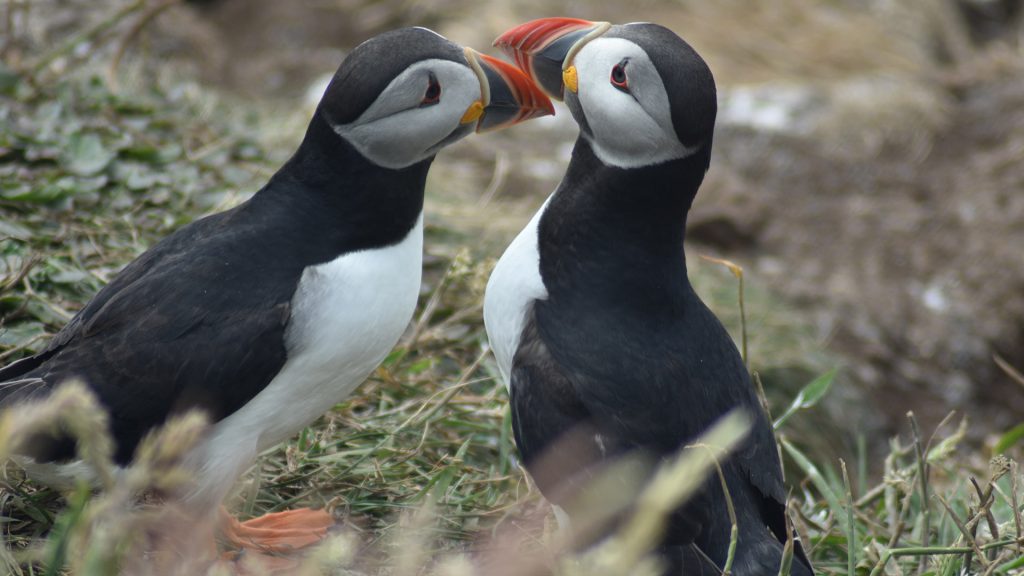How many days do you need on Mull?
To truly enjoy the Isle of Mull, 3 to 5 days is ideal. This gives you enough time to explore Tobermory, drive scenic routes to Calgary Bay, Duart Castle, and Fionnphort, and possibly take a boat trip to Staffa or Iona. You’ll also have time for wildlife watching—sea eagles, otters, red deer, and maybe whales.
A one-day visit can work, but it’s rushed and limits what you’ll see. Mull’s single-track roads and stunning scenery invite a slower pace. If you’re interested in hiking Ben More (Mull’s only Munro), relaxing on beaches, or visiting the Treshnish Isles, plan for a longer stay to enjoy the island properly. Any Isle of Mull travel guide worth reading will recommend giving yourself time, not just to see the sights, but to absorb the rhythm of the place.

Is the Isle of Mull worth visiting?
Yes, the Isle of Mull is absolutely worth visiting. It offers some of the best wildlife watching in the UK, with opportunities to see white-tailed sea eagles, otters, puffins, whales, and more. Its colourful capital, Tobermory, is charming and walkable, with local shops, seafood restaurants, and a distillery.
The island also boasts unspoiled beaches, dramatic coastal cliffs, ancient castles, and rich cultural heritage. Whether you’re interested in outdoor activities, boat trips, photography, or just peaceful landscapes, Mull provides a rewarding and memorable experience that appeals to a wide range of visitors.
How to spend a day on the Isle of Mull?
Start early by taking the ferry from Oban to Craignure. From there, head north to Tobermory, where you can stroll around the harbour, visit the whisky distillery, browse local shops, and maybe stop for lunch.
In the afternoon, drive west to Calgary Bay for a beach walk or scenic picnic. If time allows, consider a visit to Duart Castle near Craignure on your way back to the ferry. Alternatively, join a boat tour from Tobermory or Ulva Ferry to spot puffins, whales, or seals. It’s a long but fulfilling day that offers a snapshot of the island’s beauty and wildlife.
Can you get around Mull without a car?
You can get around Mull without a car, but it’s not easy. Bus services do exist, mainly connecting Craignure, Tobermory, Salen, and Fionnphort, but they are limited and infrequent, especially outside peak summer months.
During the tourist season, a few guided day tours are available, and boat tours from Tobermory can help you explore further. Cycling is another option, though the terrain is hilly and can be challenging in poor weather. If you’re staying for more than a couple of days, or want flexibility, having a car is strongly recommended.
How much is the ferry from Oban to Mull?
As of 2025, foot passengers pay around £4.30 one way or £8.60 return. For a car and driver, the fare is approximately £18.30 one way or £36.60 return. Additional passengers in the car are charged separately, usually about £4.30 per person.
These fares are for the CalMac ferry from Oban to Craignure. Prices may be slightly higher during the summer timetable and can change annually. Children, seniors, and island residents may be eligible for discounts. It’s best to check CalMac’s website for current fares and special offers.
Do you need to book the ferry to the Isle of Mull?
Yes, advance booking is essential if you’re taking a car on the ferry. Spaces fill quickly, especially during school holidays and summer weekends. It’s also advisable to book as a foot passenger during busy times to ensure a place on your preferred sailing.
You can book tickets through the CalMac website. Foot passengers can sometimes get on without a reservation in quieter seasons, but booking guarantees your spot and avoids delays. If you miss your scheduled sailing, you may be placed on standby for the next available one, depending on capacity.
How long is the ferry ride from Oban to Isle of Mull?
The ferry from Oban to Craignure takes about 50 minutes. Boarding usually begins around 20 to 30 minutes before departure, and you should check in at least 20 minutes in advance.
The journey offers scenic views of the surrounding islands and is an enjoyable part of the trip. Onboard, there are toilets, indoor seating, and a café. You can also go out on deck to enjoy the sea air and look for seabirds or dolphins. It’s a smooth and well-run service, but always check ahead for weather-related changes.
What is there to do on Mull?
There’s a wide variety of things to do on Mull. Visit Tobermory for its colourful harbour, independent shops, and whisky distillery. Head to Duart Castle to explore the seat of Clan Maclean and take in the views over the Sound of Mull.
Nature lovers can hike Ben More, enjoy beaches like Calgary Bay, or explore coastal walks. Wildlife is a major draw—book boat trips to see puffins, whales, and seals, or join a land-based tour to spot sea eagles and otters. Historical sites, scenic drives, kayaking, photography, and stargazing all add to the experience.

When to visit the Isle of Mull?
The best time to visit is from May to September. During these months, the weather is mild, most boat trips and tours are running, and wildlife is most active. May and June are especially good, with long days, less rain, and fewer midges.
July and August are warmer and busier, with all services fully operational. September can still offer good weather and fewer crowds. Winter is peaceful but many attractions are closed, and ferry services may be disrupted by storms. Visit in spring or summer for the most rewarding experience, especially if you’re planning outdoor activities.
Are midges a problem on Mull?
Yes, midges can be a nuisance during the warmer months, especially from June to early September. They are most active during dawn and dusk and tend to congregate in still, damp areas like woodlands and loch edges.
Windy and coastal locations usually have fewer midges. To reduce the impact, wear long sleeves, use insect repellent like Smidge or Avon Skin So Soft, and avoid lingering in sheltered areas during peak midge times. They’re more annoying than harmful, and with the right preparation, they don’t have to spoil your trip.
What food is the Isle of Mull famous for?
Mull is known for its high-quality local produce. The most famous export is Isle of Mull Cheddar, made from unpasteurised milk at Sgriob-ruadh Farm just outside Tobermory. You can visit the farm for tastings and a café experience.
Seafood is another highlight. Hand-dived scallops, langoustines, mussels, and lobster are caught in local waters and served fresh in many restaurants. Mull also produces venison, beef, and lamb from its hills and farms. You’ll find artisan baked goods, craft beer, local gin, and preserves throughout the island. Several restaurants specialise in showcasing seasonal island ingredients.
When to see puffins on Mull?
Puffins are best seen between late April and early August, with peak viewing in May, June, and early July. They breed on offshore islands like Staffa and the Treshnish Isles, which are accessible by boat from Mull.
Boat tours depart mainly from Ulva Ferry or Tobermory and land you close to puffin colonies, where the birds are remarkably tolerant of people. You can often get within a few feet for great photos. After August, the puffins return to the open sea and are no longer visible until the next breeding season.

When to see whales in Mull?
Whale watching season runs from May to September, with the highest chances of sightings in July and August. Minke whales are the most commonly seen species, but you might also encounter humpback whales, orcas, and basking sharks. Common dolphins and harbour porpoises are frequent visitors too.
Boat tours operate from Tobermory and Ulva Ferry, led by knowledgeable guides who follow responsible wildlife watching codes. Tours often include sightings of seabirds, seals, and sometimes puffins, making for a rich experience. Early morning tours usually offer the calmest sea conditions and the best light for photography.
When to see sea eagles on Mull?
White-tailed sea eagles can be seen on Mull all year round. The best time to observe them is in spring and summer when they are nesting and raising chicks. Mull has several resident pairs, and the birds are often spotted soaring over lochs and cliffs, especially around Loch na Keal, Glen More, and Loch Scridain.
Mull Wildlife Tours runs guided viewing sessions in the breeding season, providing scopes and expert commentary without disturbing the birds. Even outside the nesting period, the eagles can often be seen hunting or roosting, making Mull one of the best places in Britain to see them reliably.

